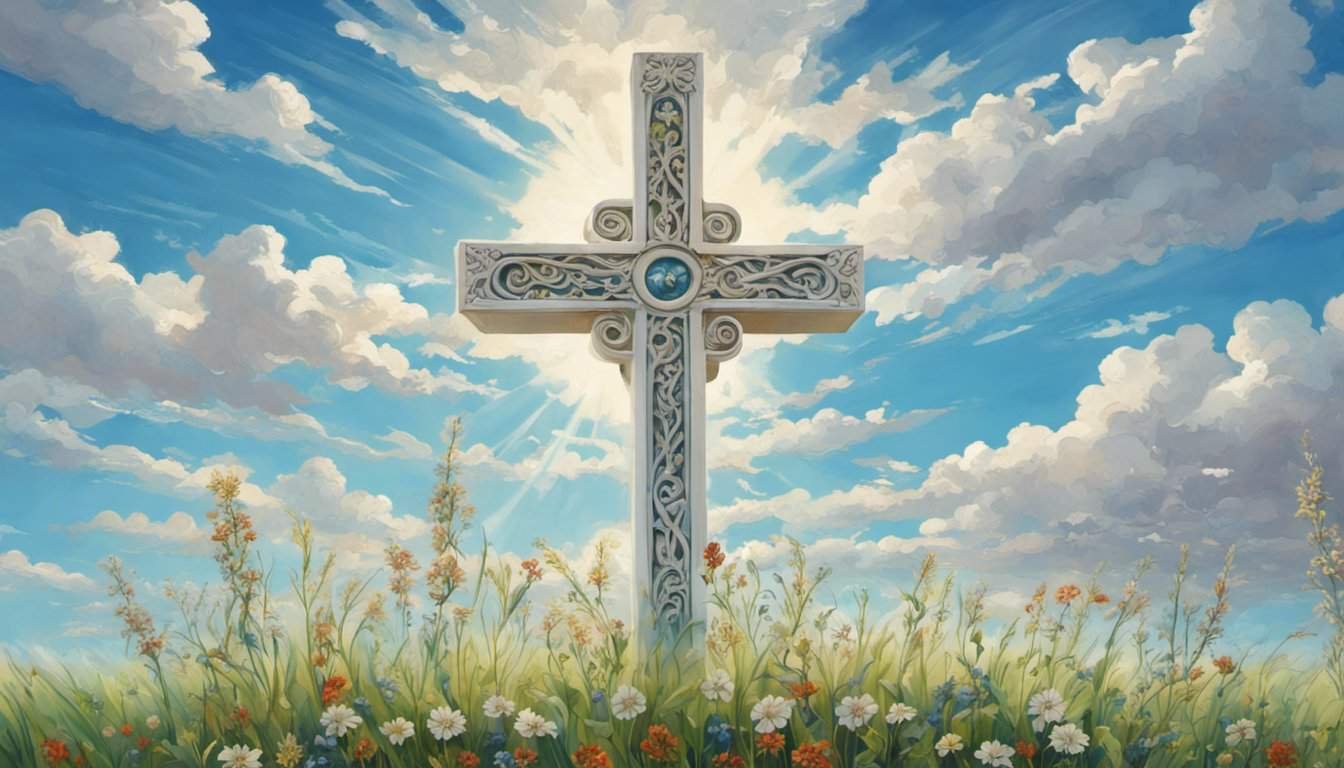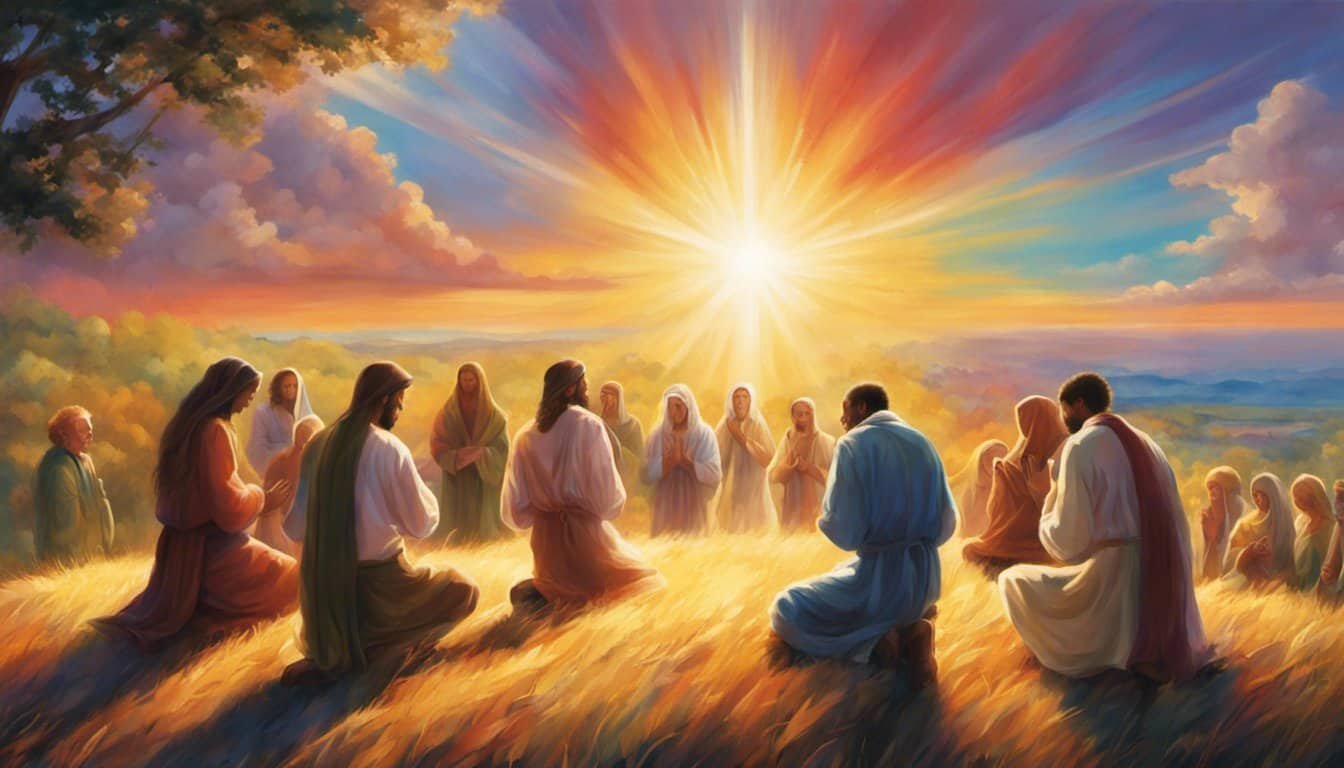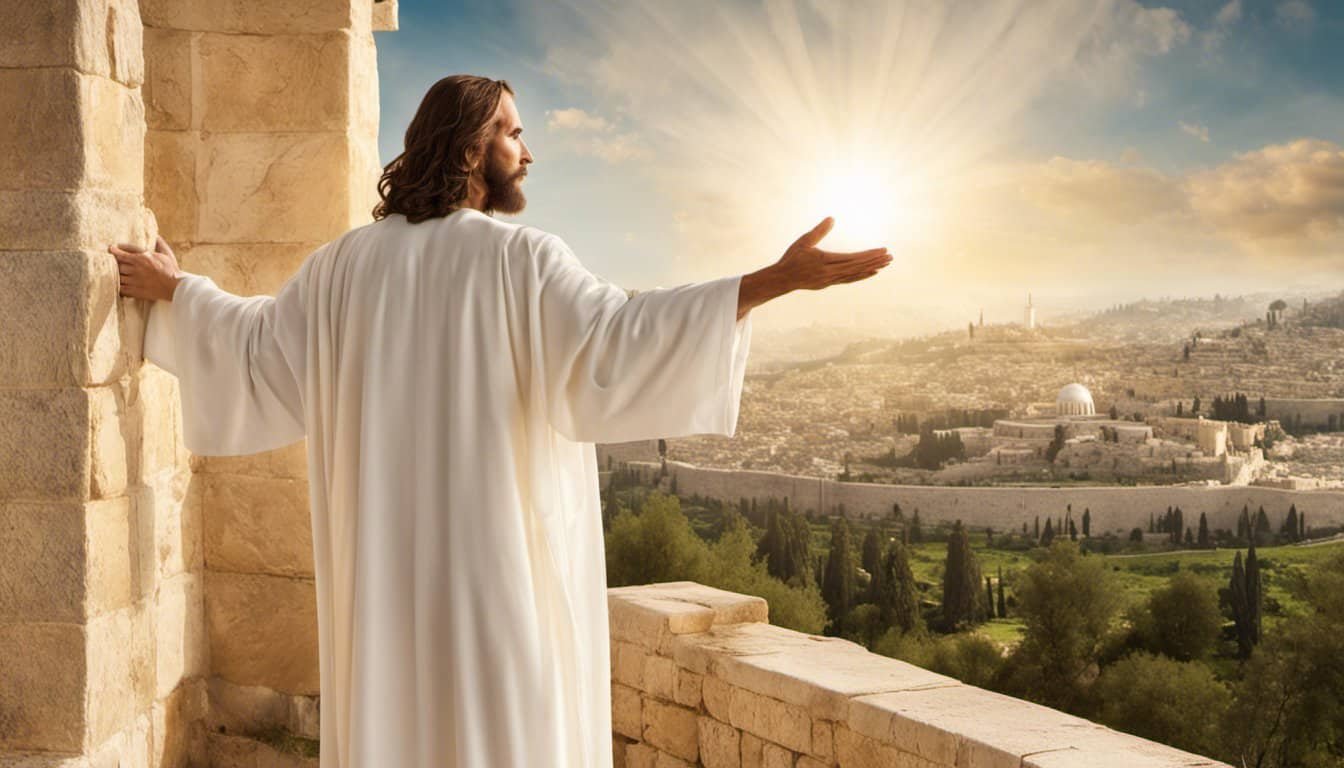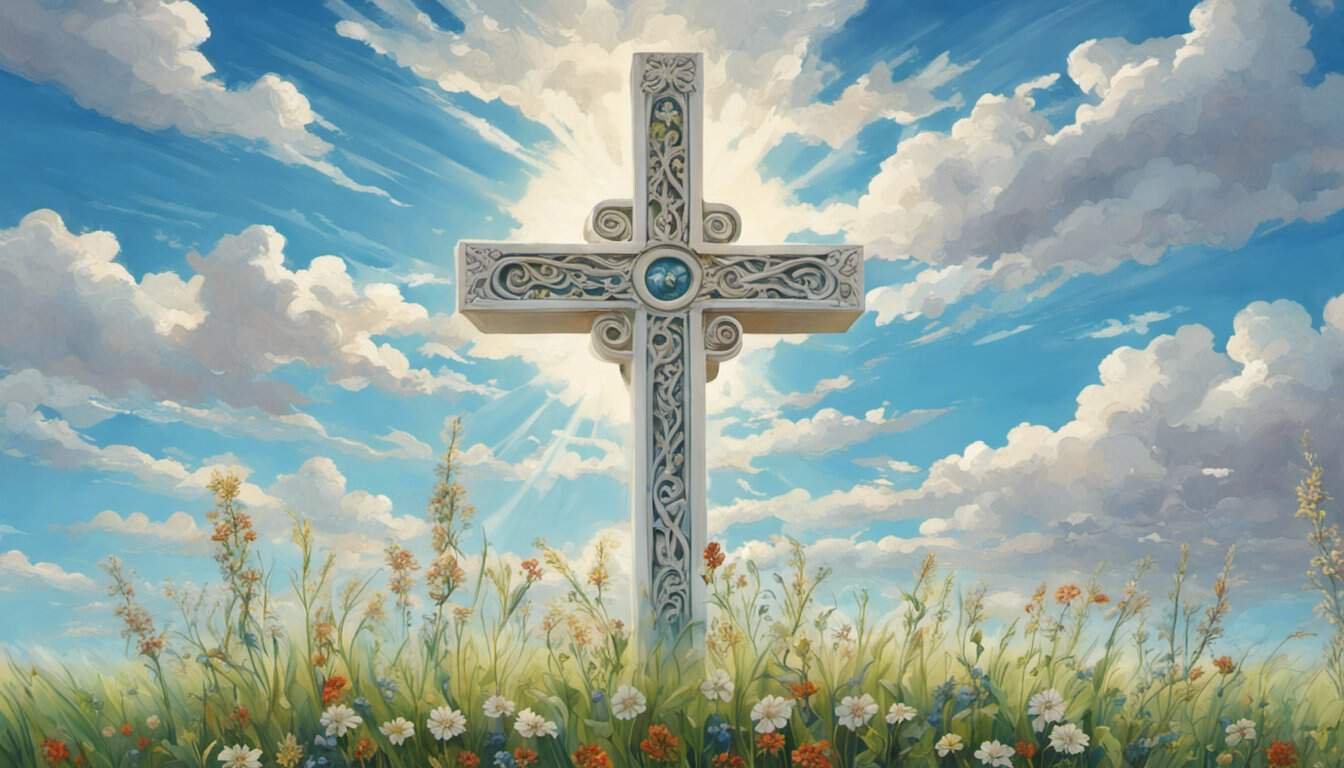The story of Adam and Eve is one of the most well-known tales from the Bible, found in the book of Genesis. This narrative explores themes of innocence, temptation, and the profound consequences of choice. The fall of man represents the moment humanity transitioned from a state of pure harmony with God to one marked by sin and separation.


In the Garden of Eden, Adam and Eve enjoyed a perfect life, surrounded by beauty and abundance. However, their disobedience led to a pivotal moment that forever changed human nature and destiny. This tale not only informs many religious beliefs but also raises important questions about morality, free will, and redemption.
Understanding this foundational story helps to grasp the complexities of human experience. Its effects ripple through theological discussions and everyday life, offering lessons on the challenges of temptation and the hope of restoration.
Key Takeaways
- The story illustrates the consequences of disobedience in the Garden of Eden.
- It highlights the impact of sin on humanity’s relationship with God.
- Redemption is suggested as a means to restore the lost connection between God and man.
Creation and the Garden of Eden

In the beginning, God created the world and formed the first humans, Adam and Eve. This foundation set the stage for the story of humanity. The perfect environment of the Garden of Eden played a vital role in their lives as the first humans.
The Breath of Life and the First Humans
According to Genesis 1, God created Adam from dust and breathed life into him. This act made Adam a living being, marking the beginning of humankind.
Next, God saw that Adam needed a companion. He created Eve from one of Adam’s ribs, ensuring they were connected. Together, they represented the first human partnership. Their creation emphasized the importance of community and relationships among humans.
Genesis 2: Life in Paradise
The Garden of Eden was a lush paradise filled with beauty and abundance. It had two significant trees: the Tree of Life and the Tree of Knowledge of Good and Evil.
Adam and Eve could eat freely from the tree of life, which symbolized eternal life. However, they were forbidden to eat from the Tree of Knowledge of Good and Evil. This command was important as it set boundaries for their actions.
In this paradise, Adam and Eve tended to the garden and enjoyed a close relationship with God. In this perfect setting, they experienced freedom and innocence, living in harmony with nature and each other.
The Fall of Man
The Fall of Man refers to the story of Adam and Eve and their disobedience to God. This event led to sin entering the world and changed humanity’s relationship with God forever. The key elements include temptation, disobedience, the consequences of their actions, and ultimately their expulsion from Eden.
Genesis 3: The Temptation
In Genesis 3, the serpent approaches Eve with cunning words. The serpent questions God’s command about the forbidden fruit. This setup shows the initial temptation that leads to the eventual downfall.

The serpent tricks Eve into thinking that eating the fruit will open her eyes and make her wise, like God. This interaction highlights the power of temptation.
The serpent’s deceptive words create doubt in Eve’s mind. She begins to consider the possibility that God’s warning might not be true. This moment sets the stage for the tragic events that follow.
Disobedience and Eating the Forbidden Fruit
Eve, swayed by the serpent’s suggestion, decides to eat the fruit from the forbidden tree. After tasting it, she shares it with Adam, who also eats. This act of disobedience marks the first sin in the Biblical context.
Adam and Eve’s choice directly opposes God’s command, showing a willingness to ignore His authority. This disobedience leads to immediate changes in their perception. Suddenly, they realize their nakedness and feel shame. They try to cover themselves with fig leaves, a sign of their newfound awareness and guilt. This moment underscores the serious impact of their choice.
Immediate Consequences of Sin
As soon as Adam and Eve eat the fruit, they experience significant consequences. Their relationship with God is broken, and they hide from Him, afraid of His reaction. This fear marks a shift from innocence to guilt and shame. They no longer feel safe in their surroundings.
The act of eating the forbidden fruit brings awareness of sin into the world. Adam and Eve understand good and evil now, but only through loss and shame. The immediate consequences show how their decision alters their lives forever and leads them away from paradise.
Expulsion from Eden
After discovering their disobedience, God confronts Adam and Eve. He explains the repercussions of their actions. They must leave the Garden of Eden, the paradise where they enjoyed a close relationship with Him.
This expulsion symbolizes the separation from God that sin brings. The cherubim and a flaming sword guard the entrance to the garden. This marks the end of their innocence and access to eternal life. Adam and Eve’s journey into a world filled with hardship begins. Their actions change everything, bringing pain, suffering, and toil into humanity.
The Curses and Their Implications
The story of Adam and Eve shows the deep consequences of their actions. The curses placed upon them and the serpent highlight the challenges that humanity faces as a result of their disobedience.
Curse for the Serpent

The serpent received a specific curse for its role in the temptation. In Genesis, it was destined to crawl on its belly and eat dust all its life. This punishment symbolizes humiliation and defeat.
The curse also includes enmity between the serpent and humanity. This represents the ongoing struggle between good and evil. The serpent is often seen as a representation of Satan. This connection highlights the larger battle between humanity and sin.
Suffering and Toil for Humanity
The curses for Adam and Eve introduce significant suffering and toil.
For Adam, the ground was cursed. He would now have to work hard for his food. Instead of easy labor, he faced the challenge of thorns and thistles. Meanwhile, Eve’s curse involved increased pain in childbirth. This added a new level of suffering. Her role as a nurturer now came with challenges.
Together, these curses show that life would be filled with struggle.

These implications continue to resonate today. Humanity often feels the weight of working hard and facing pain. The story of Adam and Eve is a reminder of the challenges rooted in their choices.
Mortality and the Promise of Redemption
The story of Adam and Eve introduces essential themes of mortality and the hope of redemption. Understanding these concepts helps clarify the relationship between sin, death, and the promise of eternal life through Jesus Christ.
Inevitability of Death
After Adam and Eve’s choice to eat from the forbidden tree, they brought sin into the world. This act led to their spiritual and physical deaths. Sin separates humanity from God, creating a cycle of death and suffering.
Death became an unavoidable part of human existence. It is a direct result of their disobedience. Every person faces death, reflecting the fallen state of the world. This situation is a reminder of the urgency to seek redemption for the hope of a restored relationship with God.
Genesis Prophecy of Salvation

Amidst the consequences of sin, God offered a promise of salvation. In Genesis, He stated that the seed of the woman would crush the serpent’s head. This prophecy foretold the coming of Jesus Christ, who would ultimately defeat sin and death.
Through Jesus’s sacrifice, humanity is offered redemption. His resurrection signifies victory over death, providing hope for eternal life.
By accepting this gift, individuals can find salvation and restore their relationship with God. This prophetic promise serves as a beacon of hope for those searching for meaning beyond their mortal lives.
Long-Term Effects of the Fall
The Fall of Adam and Eve has profound implications for humanity. It shaped the human experience, introducing issues like original sin and a constant spiritual struggle that influences faith and morality.
Impact on the Human Race

The Fall introduced original sin to everyone. This means that all people inherit a sinful nature from Adam and Eve. Because of this, they often struggle to choose good over evil.
Before the Fall, humanity lived in harmony with God. Afterward, life became challenging and marked by suffering. There are hardships like pain, death, and moral confusion. All these arise from the knowledge of good and evil that Adam and Eve gained by disobeying God.
This change drastically impacted relationships among people. Competition, jealousy, and conflict can be traced back to their disobedience. The effects of the Fall are seen in society’s struggles to promote justice and compassion.
Spiritual Struggle and Faith
The Fall also brought about a deep spiritual struggle. People face constant challenges in their faith and relationship with God. Sin has a powerful influence, leading to doubts and temptations.
Many seek redemption through faith and spiritual growth. This journey can be difficult, but it often leads to stronger beliefs and values.

People learn to recognize the power of sin and its effects on their lives. In this struggle, faith plays a crucial role. It helps individuals find hope and strength despite challenges. Through faith, they strive to overcome the challenges of sin and seek a closer relationship with God. The pursuit of faith leads them to a deeper understanding of morality and purpose in life.
Theological Significance and Interpretation
The story of Adam and Eve offers rich theological insights. It explores themes of righteousness, transgression, and rebellion against God.
Different religious traditions interpret these events in unique ways. They reflect diverse perspectives on sin and redemption.
Righteousness and the Fall in Christian Theology
In Christian theology, the Fall represents a significant turning point. Adam and Eve’s choice to disobey God is seen as a transgression that brought sin into the world. This act of rebellion against God is not just a personal failure, but a foundational event affecting all of humanity.

Christian beliefs often focus on the need for righteousness. Adam and Eve’s actions led to separation from God. Their decision resulted in the shedding of blood as sacrifices became necessary for atonement.
This theme connects with the belief in Jesus Christ. His life and death offer redemption from sin, restoring the broken relationship between humanity and God.
The Story of Adam and Eve in Different Perspectives
Different faiths view the story of Adam and Eve with distinct lenses. In Islam, for example, Adam and Eve are honored as the first humans. However, their fall is less about original sin and more about human fallibility. Their story emphasizes repentance and God’s mercy.
In some interpretations, the story serves as a metaphor for the struggles between good and evil. This perspective allows for a broader understanding of moral choices in life. Various cultures find lessons in the tale about the nature of free will and the consequences of actions. This showcases a dynamic interplay of choices and their outcomes.
The diverse interpretations enrich the understanding of humanity’s place in the universe and its relationship with the divine.












